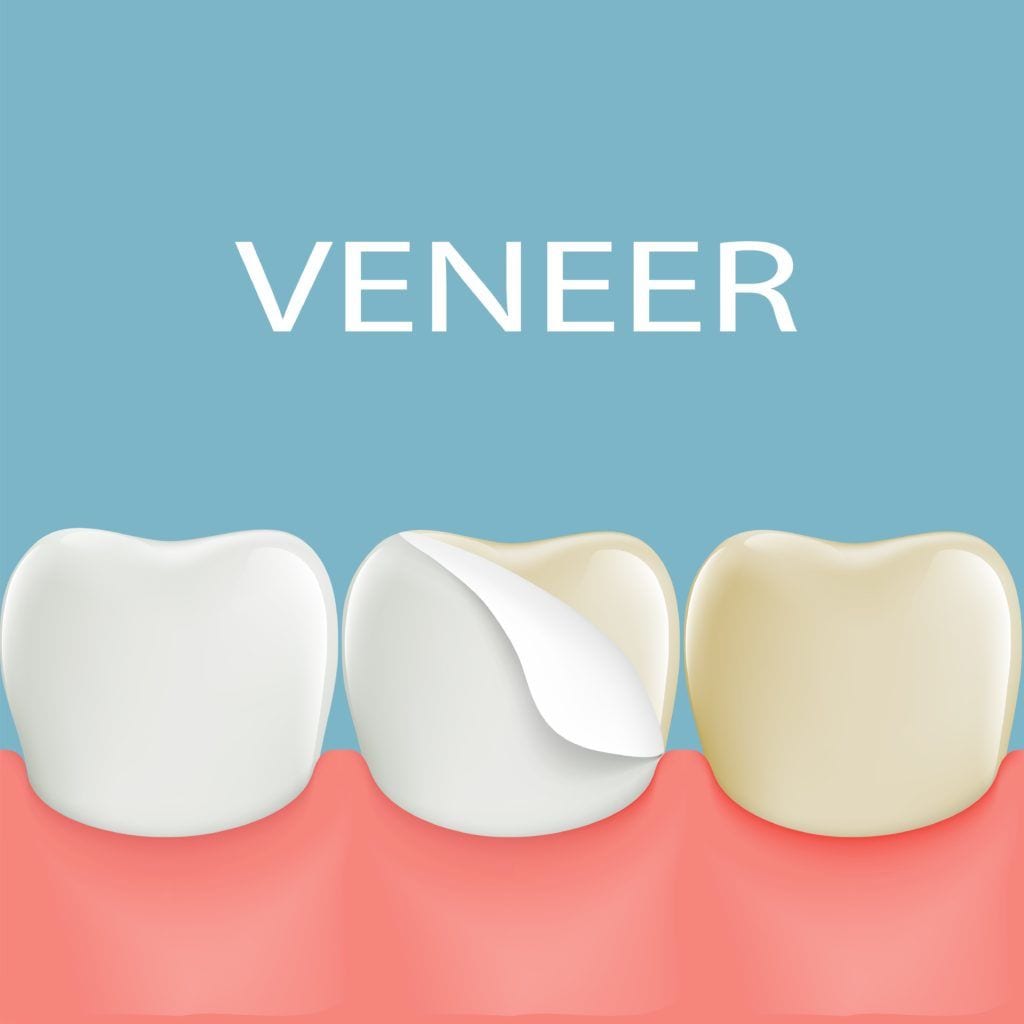What are dental veneers? Dental veneers (sometimes referred to as porcelain veneers or dental porcelain laminates) are extremely thin, custom-made shells that are designed to cover the front surface of your teeth – changing their size, shape and/or color.
Dental Veneers – A Popular Choice
Veneers are a popular choice because the results are immediate, the procedure itself is not as involved as, say, a getting implants and veneers also fix a variety of dental problems.
The common problems that veneers fix include:
- Discoloration (whether due to extrinsic or intrinsic tooth stains)
- Chipped teeth
- Cracked teeth
- Gaps between teeth
- Teeth that have a slight misalignment
When Dental Veneers Aren’t a Good Option
Veneers are typically not a good solution for people who don’t have healthy teeth or gums. If you have tooth decay or gum disease, you may not be eligible to get veneers until your dentist has successfully treated those issues. Also, people who habitually clench or grind their teeth are not good candidates for veneers.
Materials
Dental veneers are usually made out of porcelain or from resin composite materials and are bonded to the front of your teeth. Advances in technology over the last few decades have made veneers look extremely realistic. The porcelain commonly used now also provides strength and resilience to your teeth in a way that’s similar to natural enamel.
The Dental Veneer Procedure
The procedure to get veneers can take up to 3 visits. That said, advanced digital imaging systems are changing that. Many dentists are able to offer same-day veneers that almost perfectly match the color of the patient’s teeth as well as their natural shape.
To get your teeth ready for veneers, the dentist will lightly buff your teeth. This is to remove half a millimeter or so to allow for the thickness of the veneers. A local anesthetic may be used during this buffing procedure.
For composite resin veneers, the dentist will bond and sculpt the material onto your teeth. This procedure can typically be done in one appointment.
For ceramic veneers, the dentist will take a mold of your teeth. That mold is usually sent to a lab that will create the veneers. This process can take anywhere from a few days to a couple of weeks to get your veneers to your dentist. In situations where you can’t wait that long, temporary veneers can be placed in your mouth.
Once the ceramic veneers are ready, the dentist will put each veneer on your teeth. This lets you and your dentist can see how they fit and see if the color is a good match or not. If necessary, the color of the veneers can be adjusted by the shade of cement used.
Once everything looks good, the dentist will clean, polish and etch your tooth to roughen the surface up a bit in order to allow for a strong bond. She will then apply a special cement between the tooth and the veneer. A light beam is then used to activate the chemicals in the cement to harden it very quickly.
Finally, your dentist will remove any excess cement, evaluate your bite and make any last adjustments your veneer(s) requires. The dentist may want you to follow up in a few weeks to make sure all looks good and your mouth is healthy.
Cost of Dental Veneers
Veneers typically cost between $500 – $1200 per tooth depending on where in the country you live and the specific procedure/veneer material used.







